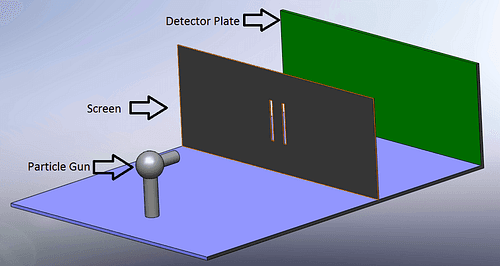What are Quantum Objects?
Curated from: medium.com
Ideas, facts & insights covering these topics:
11 ideas
·1.06K reads
9
1
Explore the World's Best Ideas
Join today and uncover 100+ curated journeys from 50+ topics. Unlock access to our mobile app with extensive features.
What Are Quantum Objects
To answer the title, it is important to understand the behaviors of objects in the classical world. The two possible objects are waves and particles, through which we can explain classical physics. So should we use the rules of waves or particles to explain the properties of quantum objects?
18
152 reads
Waves
Waves can be easily thought of through as a few examples: water, light, electromagnetic, and sound. Two main properties that describe waves are velocity and interference. For instance, when being present during a storm, the wave of light (lightning) travels at a higher velocity than the sound (thunder), meaning that waves travel at a certain velocity. Secondly, there is interference, which means that they interact with one another to form complex patters through constructive and destructive interference.
16
115 reads
Conti
When two waves have peaks and valleys at the same place, they add up to create constructive interference. On the other hand, when the peaks and valleys are at opposite places, they cancel out to create destructive interference.
14
114 reads
Particles
In our day-to-day lives, we see particles all the time in objects like balls, balloons, even airplanes as an object made up of particles or atoms. When holding one of these objects, they each have their own mass, their own defined discrete position or location, and a velocity when moving.
14
102 reads
The Double-Slit Experiment
To determine if a quantum object acts as a wave or particle, physicists have conducted the double-slit experiment to come to a conclusion. This experiment was set up using two walls, one with two slits spaced closely together and another wall right behind it.
When sending particles towards the slits, you would see discrete spots where each of the particles hit the walls. After many particles being launched towards the slits, the spots would form two distinct lines on the second wall.
15
97 reads
Con
When sending waves through the slits, we see an interference pattern, which is a pattern of bright and dark lines. These lines show constructive and destructive interference through adding up to create bright lines and canceling out to create dark lines. This also can be thought of as some waves coming out of the slits amplifying one another, while others cancel each other out.
14
84 reads
Results
Particles Result:
- No interference
- Discrete spots for each particle
- Two lines
Waves Result:
- Interference / interference pattern
- Multiple lines
14
85 reads
Then
This begs the question, what is the result from sending quantum objects through the two slits? Will it turn out to show the results of a particle or a wave? To test this, physicists sent electrons through the two slits to test this, and what they found out was each electron made a discrete spot on the wall, like particles. Furthermore, sending more electrons through the slits created the same interference pattern as waves.
13
79 reads
Wave-Particle Duality
In quantum, waves can behave as particles and particles can behave as waves, resulting from several unique properties of quantum mechanics: discreteness, superposition, and interference.
Electrons, in fact, aren’t the only objects that are described by wave-particle duality. Recently there was a case study to determine how large an object can be to still be quantum, and it turns out that C₆₀ or 60 atoms of Carbon was the biggest quantum object through this study to be explained by wave-particle duality.
15
73 reads
Quantum Mechanics Interpretations
Due to the complexities of quantum mechanics, several theories have been theorized by different physicists.
The first of these is the Copenhagen Interpretation, where he theorized that when a quantum state is measured, it collapses to one of the possible states. This is one of the most widely accepted theories today.
Secondly, there is the Many Worlds Interpretation, which states when you make a measurement, the universe splits into another universe where in one, one state was measured, and in another, a different state was measured.
15
76 reads
Lastly...
Lastly, there is the De Broglie-Bohm Interpretation, or the Pilot Wave Theory, which defines wave-particle duality as the wave and particle parts of the quantum object coexisting, similar to a droplet of water bouncing on a puddle.
14
91 reads
IDEAS CURATED BY
卐 || एकं सत विप्रा बहुधा वदन्ति || Enthusiast || Collection Of Some Best Reads || Decentralizing...
अर्हम् Arham's ideas are part of this journey:
Learn more about personaldevelopment with this collection
Practicing empathy in relationships and communication
Understanding the importance of balance in personal and professional life
Defining your path in life
Related collections
Similar ideas
9 ideas
Top 10 Totally Weird Physics Ideas
thoughtco.com
12 ideas
The Quantum Mind: How We Can Transform Our Reality
exploringyourmind.com
Read & Learn
20x Faster
without
deepstash
with
deepstash
with
deepstash
Personalized microlearning
—
100+ Learning Journeys
—
Access to 200,000+ ideas
—
Access to the mobile app
—
Unlimited idea saving
—
—
Unlimited history
—
—
Unlimited listening to ideas
—
—
Downloading & offline access
—
—
Supercharge your mind with one idea per day
Enter your email and spend 1 minute every day to learn something new.
I agree to receive email updates




